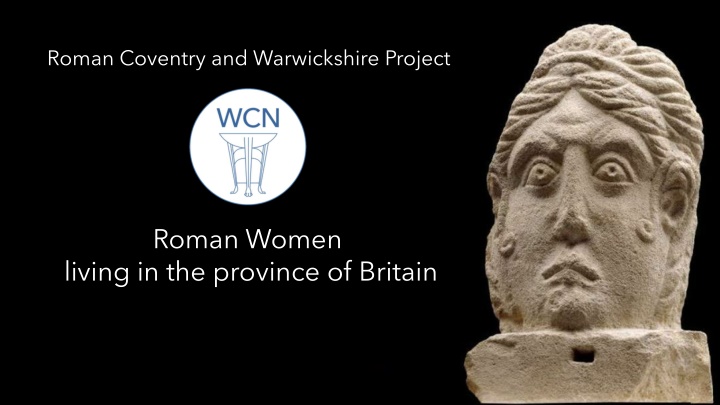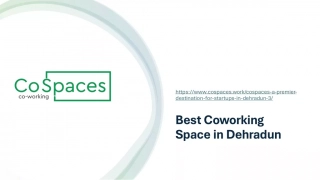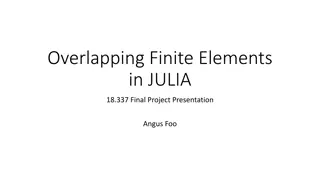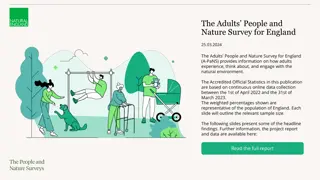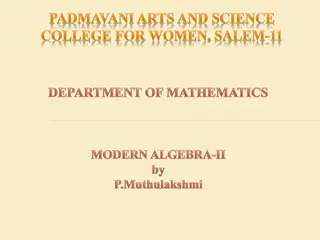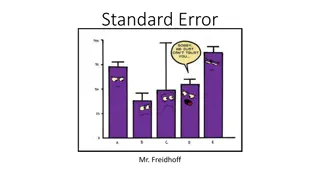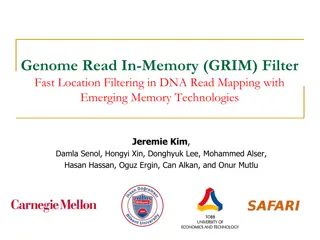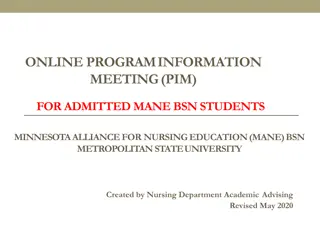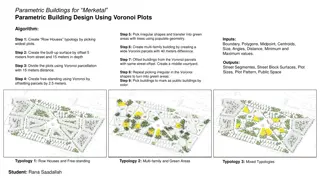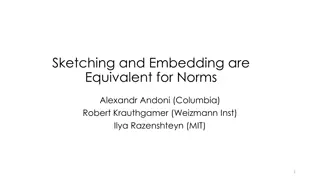Personal Information Management: Overlapping PIM Spaces
What happens when Personal Information Management (PIM) spaces overlap? Explore the challenges and opportunities arising from overlapping personal information spaces, along with discussions on managing identities, best practices, infrastructure, and evaluating PIM approaches.
Download Presentation

Please find below an Image/Link to download the presentation.
The content on the website is provided AS IS for your information and personal use only. It may not be sold, licensed, or shared on other websites without obtaining consent from the author.If you encounter any issues during the download, it is possible that the publisher has removed the file from their server.
You are allowed to download the files provided on this website for personal or commercial use, subject to the condition that they are used lawfully. All files are the property of their respective owners.
The content on the website is provided AS IS for your information and personal use only. It may not be sold, licensed, or shared on other websites without obtaining consent from the author.
E N D
Presentation Transcript
Roman Coventry and Warwickshire Project Roman Women living in the province of Britain
Sources of evidence Funerary monuments Writing tablets Jewellery/objects related to personal adornment Votive offerings
Funerary Monuments What form did they take? Stone monuments which include: Text (incised inscriptions) Images (carved) What can they tell us? Identity and self representation How others commemorated the deceased Tombstone of Aelia Aeliana, York Museum No. YORYM : 2010.43
Julia Velva What can you see in the relief image? Inscription translation: To the spirits of the departed (and) of Julia Velva: she lived most dutifully 50 years. Aurelius Mercurialis, her heir, had this set up, and in his lifetime made this for himself and his family. (RIB 688). Tombstone of Julia Velva, York Museum No. YORYM : 1998.25
Flavia Augustina What can you pick out from this tombstone? Inscription translation: To the spirits of the departed (and) of Flavia Augustina; she lived 39 years, 7 months, 11 days; her son, Saenius Augustinus, lived 1 year, 3 days, and [ ]a, (her daughter), lived 1 year 9 months, 5 days; Gaius Aeresius Saenus, veteran of the Sixth Legion Victrix, had this set up for his beloved wife and himself. (RIB 685) Tombstone of Flavia Augustina, York Museum No. YORYM : 1998.18
Julia Pacata No image, but a large altar-shaped tomb of high quality. Inscription translation: To the spirits of the departed (and) of Gaius Julius Alpinus Classicianus, son of Gaius, of the Fabian voting-tribe, procurator of the province of Britain; Julia Pacata I[ndiana], daughter of Indus, his wife, had this built. (RIB 12). Tomb dedicated by Julia Pacata, British Museum No. 1852,0806.1
Writing tablets Two different types of writing tablets: Stylus/wax tablets Ink tablets Tablets in Roman Britain Vindolanda What do the tablets tell us and who wrote Writing tablets from Vindolanda, British Museum No. 1989,0602.74 them?
Claudia Severas birthday party! Who was she? Birthday party invitation to her friend Sulpicia Lepidina. One of the earliest known examples of writing in Latin by a woman. Written by a scribe, whose writing is recognizable on other tablets, but Claudia Severa has written the last lines as the difference in handwriting can be seen. Claudia Severa to her Lepidina greetings. On the third day before the Ides of September (11 September), sister, for the day of the celebration of my birthday, I give you a warm invitation to make sure that you come to us, to make the day more enjoyable for me by your arrival, if you are present (?). Give my greetings to your Cerialis. My Aelius and my little son send their greetings. (2nd hand) I shall expect you sister. Farewell, sister my dearest soul, as I hope to prosper, and hail. British Museum No. 1986,1001.64.
Claudia Severa and Sulpicia Lepidina Claudia Severa writes to Sulpicia Lepidina again to say that her husband has given permission for her to visit. Women able to travel and had active social lives. Relationship and friendship. " ... greetings. Just as I had spoken with you, sister, and promised that I would ask Brocchus and would come to you, I asked him and he gave me the following reply, that it was always readily (?) permitted to me, together with .... to come to you in whatever way I can. For there are certain essential things which .... you will receive my letters by which you will know what I am going to do .... I was ... and will remain at Briga. Greet your Cerialis from me. (Back, 2nd hand) Farewell my sister, my dearest and most longed-for soul. (1st hand) To Sulpicia Lepidina, wife of Cerialis, from Severa, wife of Brocchus (?)." British Museum No. 1986,1001.46.
Jewellery/objects related to personal adornment Wide and abundant range of items from Roman Britain: Jewellery in various materials such as gold, silver, precious stones, glass gemstones, amber and jet. Hairpins, made from bone or ivory Brooches, made from metal, usually bronze. Romano-British Trumpet Brooch, Lunt Roman Fort Museum.
Jet pendant Oval jet pendant, with two cupids. Worn suspended on cord, leather or ribbon. British workmanship dated to 2nd to 4th centuries AD. Jet production in Roman Britain. British Museum No. 1852,0626.1.
Gold necklace Necklace from the Backworth Hoard. Chain has 72 links; clasp is in the form of a wheel; crescent shaped pendant. Owning and wearing jewellery: Could be part of a dowry. Display of status/wealth. Tensions around adornment. British Museum No. 1850,0601.3.
Hairpins Usually made from bone or ivory and sometimes jet or metals. Jet hairpin (left) measures 55mm; bone hairpin (right) measures 195 mm. Hairstyles and use of hairpins. British Museum No. 1866,1203.109. British Museum No. OA.245.
Brooches Different shapes and sizes. Could be plain or very decorative and be made in precious metals with jewels. Functional items to hold clothing together or in place. Romano-British Brooches, Department of Classics and Ancient History Collection, University of Warwick.
Votive objects What were these? Objects which were dedicated to a god or multiple gods by individuals or groups of individuals. These often had inscriptions telling who the object was dedicated to and naming the dedicant. Specific objects included: altars, statuettes, plaques. Other objects were often buried as offerings in the precincts of temples. British Museum No. 1969,0701.3.
Votive plaque Silver plaque part of the Ashwell Hoard, discovered in 2002 in Herfordshire. Hoard consisted of 20 gold and silver votive plaques, jewellery, a statuette and base. Image shows Minerva. Dedicated to the goddess Senuna by Lucilia Sena. British Museum No. 2003,0901.16.
Votive figurine Another votive object from the Ashwell Hoard. Silver hollow figurine damaged. Silver base found separately; inscription has dedication by Flavia Cunoris. Fulfilment of a vow. British Museum No. 2003,0901.1.
Bibliography Secondary Sources: Aldhouse-Green, M. (2018) Sacred Britannia, The Gods and Rituals of Roman Britain, Thames & Hudson, London. Allason-Jones, L. (2005) Women in Roman Britain, Council for British Archaeology, York. De La B doy re, G. (2015) The Real Lives of Roman Britain, Yale University Press, New Haven and London. Hobbs R. and Jackson, R. (2010) Roman Britain, Life at the Edge of Empire, British Museum Press, London. Jackson, R. and Burleigh, G. (2018) Dea Senuna: Treasure, Cult and Ritual at Ashwell, Hertfordshire, British Museum Press, London. Olson, K. (2008) Dress and the Roman Woman, Routledge, Abingdon. Online resources: British Museum Collections Online: https://www.britishmuseum.org/collection/ North Hertfordshire Archaeological Society: http://www.nharchsoc.org/dea-senuna-treasure-cult-and-ritual-at-ashwell-hertfordshire/ Roman Inscriptions of Britain: https://romaninscriptionsofbritain.org/ Vindolanda Charitable Trust: https://www.vindolanda.com/ Vindolanda Tablets Online: http://vindolanda.csad.ox.ac.uk/ York Museums Trust: https://www.yorkmuseumstrust.org.uk/
